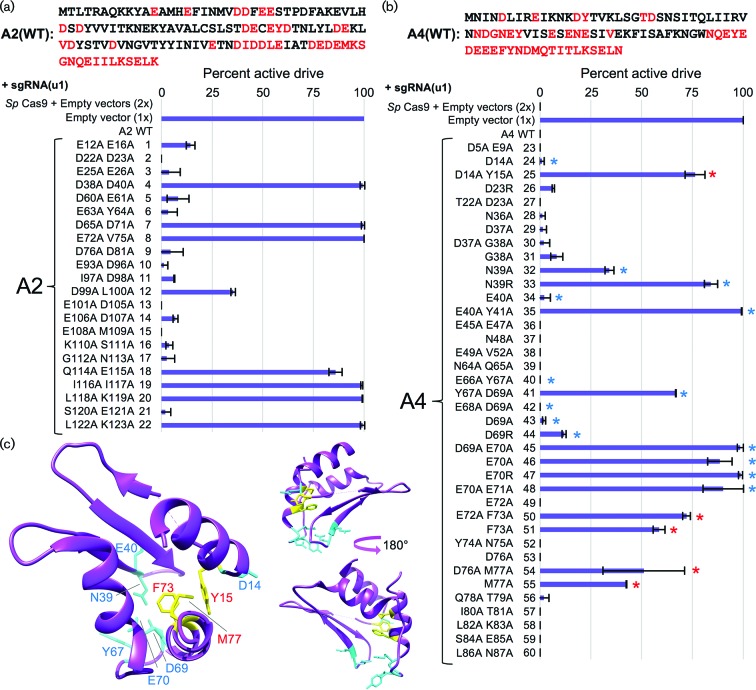Fig. 5.
Mutational analysis of the Cas9 inhibitory function of AcrIIA2 in an active gene drive system. (a) Vectors expressing AcrIIA2 mutants (Fig. 3, top left, red text) and the sgRNA[u1] plasmid (pGF-V1220) were transformed into yeast along with controls (2x, empty pRS316, pRS425; 1x, empty pRS316, sgRNA[u1] plasmid). Gene drive strains were mated to the target strains (GFY-3206 and GFY-3207) and the diploid strains were induced in rich media containing galactose for 5 h before plating. The percentage of colonies displaying an active drive system was quantified in duplicate. Error, sd. (b) Vectors expressing AcrIIA4 mutants (Fig. 3, top right, red text) and the sgRNA[u1] plasmid were analysed as in (a). Additional mutants not previously tested were also included (pGF-V1470 to pGF-V1485 and pGF-V1534 to pGF-V1536). Blue asterisks, residues tested by previous groups [25, 26] shown to contribute to AcrIIA4 association with sgRNA-loaded Cas9. Red asterisks, mutational substitutions displaying a partial loss of inhibitory function not previously documented. (c) Left, crystal structure of the AcrIIA4 protein bound to Cas9/sgRNA (PDB 5XBL). Cyan-labelled residues (and side chains) are residues previously demonstrated to be critical for AcrIIA4 association with Cas9. Yellow-labelled residues (red text) illustrate three substitutions found to partially reduce AcrIIA4 inhibitory function in vivo. Right, side views of AcrIIA4 with a 180° rotation.

